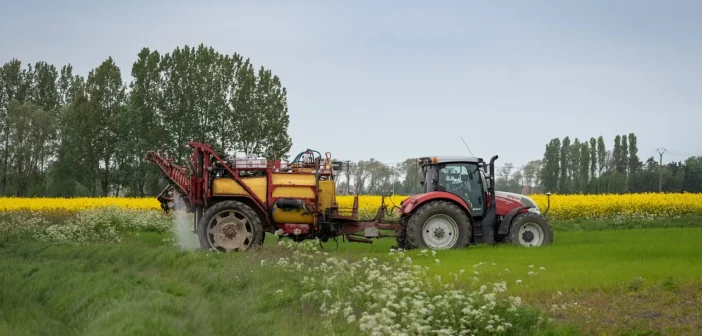credit:https://pixabay.com/
Tariff wars, characterized by countries imposing and escalating tariffs on each other’s goods, have profound implications for small-scale farmers and local agricultural markets. These trade conflicts can disrupt traditional farming operations, influence market dynamics, and reshape the agricultural landscape. This article delves into six unique subtopics to elucidate the multifaceted effects of tariff wars on small-scale agriculture.
1. Economic Strain on Small-Scale Farmers
Tariff wars disrupt global supply chains, causing ripple effects that burden farmers with higher costs for essential inputs like seeds, fertilizers, and machinery. When tariffs are imposed on raw materials such as steel and aluminum, farm equipment manufacturers pass these added expenses onto consumers, making tractors, irrigation systems, and storage facilities more expensive. Small-scale farmers, who already operate on thin profit margins, are hit hardest as they lack the economies of scale to absorb these cost increases. Simultaneously, retaliatory tariffs from trading partners can choke export markets for crops like soybeans, dairy, and pork, leaving farmers with surplus goods and depressed prices. This dual pressure—higher production costs and lower revenue—forces many farmers to take on additional debt, cut back on investments in innovation, or even abandon farming altogether. Over time, prolonged trade disputes weaken rural economies, stifle agricultural growth, and create uncertainty that discourages long-term planning and sustainability in the farming sector.
2. Market Volatility and Uncertainty
Tariff-induced trade disruptions create a ripple effect that destabilizes agricultural markets, especially for small-scale farmers who lack the financial cushion to absorb sudden shocks. When tariffs limit export opportunities, excess supply floods domestic markets, driving prices down and squeezing already thin profit margins. This unpredictability forces farmers into a precarious cycle—hesitating to expand production for fear of further losses while also struggling to pivot to alternative crops due to long growth cycles and infrastructure limitations. The U.S.-China trade war exemplified this when China’s tariffs on American soybeans led to a domestic surplus, eroding prices and forcing farmers to either store unsold crops at a cost or accept lower revenues. Such disruptions don’t just impact individual farmers but ripple through supply chains, affecting rural economies, agribusinesses, and even consumer prices over time, making long-term planning increasingly difficult.
3. Shifts in Global Supply Chains
Tariff wars often disrupt the established flow of global trade, compelling countries to seek new trading partners in a bid to avoid the financial burdens of punitive duties. For small-scale farmers, this shift can lead to unpredictable changes in demand for their products, altering market dynamics. A notable example of this was during the U.S.-China trade war, when China sought to reduce its reliance on U.S. soybeans by increasing imports from Brazil, whose soy production was not subject to U.S. tariffs. This pivot dramatically impacted American farmers, as they faced a steep decline in demand and struggled to find new markets, highlighting how deeply interconnected global supply chains are and how tariff policies can ripple through local economies, particularly for small-scale producers who have limited flexibility to adjust to these changes. The result is often market volatility that disproportionately impacts those at the bottom of the supply chain, who depend on steady demand and stable prices to survive.
4. Retaliatory Measures and Export Challenges
Retaliatory tariffs, like those imposed by China on U.S. agricultural products in response to U.S. tariffs, can severely disrupt the livelihood of small-scale farmers by blocking access to crucial international markets. When one country retaliates with tariffs, it makes the targeted goods more expensive for the importing country’s consumers, reducing demand for those products. For small-scale farmers who may rely on export markets, this results in plummeting sales, income instability, and financial strain. These tariffs also strain long-standing trade relationships that are hard to rebuild, making it difficult for farmers to quickly adapt or find new markets, ultimately forcing many to absorb losses or reduce production. This can lead to a cascade of challenges, from undermining the profitability of family-owned farms to forcing smaller producers out of the market entirely, further consolidating agricultural industry power in the hands of large-scale producers.
5. Policy Responses and Support Mechanisms
Governments often implement support mechanisms like the U.S. Department of Agriculture’s Market Facilitation Program to provide immediate financial aid to farmers facing the consequences of trade disputes, such as tariff wars. These programs aim to alleviate short-term economic stress by offering direct payments, which help cover losses from reduced exports or unfavorable market conditions. However, while they offer crucial relief in times of uncertainty, they tend to be temporary solutions and do not address the long-term disruption of supply chains or market access. Such disruptions can have far-reaching effects on the agricultural sector, impacting not just farmers’ incomes, but also their ability to plan for future production, invest in new technologies, or diversify markets. Consequently, while these support mechanisms offer some buffer, they cannot fully replace the resilience and stability needed for a sustainable agricultural economy.
6. Long-Term Implications for Agricultural Sustainability
Prolonged tariff wars can destabilize agricultural markets, leading small-scale farmers to adapt in ways that may harm long-term sustainability. As trade barriers limit access to diverse markets, farmers might focus on producing a narrow range of crops that are more profitable in the short term, leading to monocultures. This shift can reduce the natural biodiversity of ecosystems, leaving farms more susceptible to pests, diseases, and environmental stresses. Such practices not only diminish soil health and resilience but also increase dependence on chemical inputs like pesticides and fertilizers, further compromising sustainability. Over time, these market-driven changes can weaken the overall viability of farming systems, making them less adaptable to shifting environmental or economic conditions.
In conclusion, tariff wars present multifaceted challenges for small-scale farmers and local agricultural markets. While some effects are immediate and tangible, such as increased input costs and market volatility, others are more insidious, potentially altering the agricultural landscape in lasting ways. It is crucial for policymakers to consider these impacts and develop strategies to support small-scale farmers in navigating the complexities of global trade conflicts.



